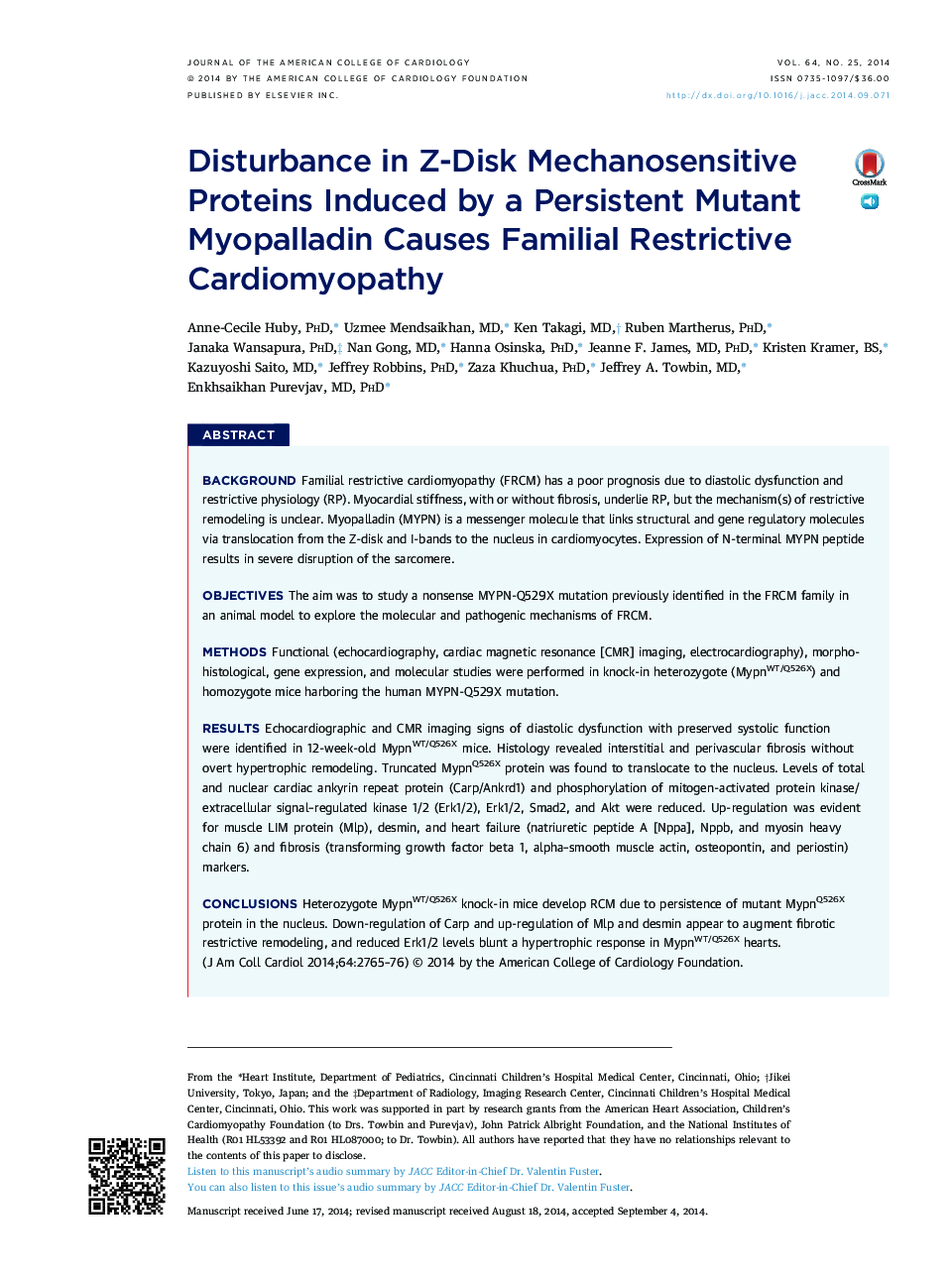| Article ID | Journal | Published Year | Pages | File Type |
|---|---|---|---|---|
| 2944031 | Journal of the American College of Cardiology | 2014 | 12 Pages |
BackgroundFamilial restrictive cardiomyopathy (FRCM) has a poor prognosis due to diastolic dysfunction and restrictive physiology (RP). Myocardial stiffness, with or without fibrosis, underlie RP, but the mechanism(s) of restrictive remodeling is unclear. Myopalladin (MYPN) is a messenger molecule that links structural and gene regulatory molecules via translocation from the Z-disk and I-bands to the nucleus in cardiomyocytes. Expression of N-terminal MYPN peptide results in severe disruption of the sarcomere.ObjectivesThe aim was to study a nonsense MYPN-Q529X mutation previously identified in the FRCM family in an animal model to explore the molecular and pathogenic mechanisms of FRCM.MethodsFunctional (echocardiography, cardiac magnetic resonance [CMR] imaging, electrocardiography), morphohistological, gene expression, and molecular studies were performed in knock-in heterozygote (MypnWT/Q526X) and homozygote mice harboring the human MYPN-Q529X mutation.ResultsEchocardiographic and CMR imaging signs of diastolic dysfunction with preserved systolic function were identified in 12-week-old MypnWT/Q526X mice. Histology revealed interstitial and perivascular fibrosis without overt hypertrophic remodeling. Truncated MypnQ526X protein was found to translocate to the nucleus. Levels of total and nuclear cardiac ankyrin repeat protein (Carp/Ankrd1) and phosphorylation of mitogen-activated protein kinase/extracellular signal–regulated kinase 1/2 (Erk1/2), Erk1/2, Smad2, and Akt were reduced. Up-regulation was evident for muscle LIM protein (Mlp), desmin, and heart failure (natriuretic peptide A [Nppa], Nppb, and myosin heavy chain 6) and fibrosis (transforming growth factor beta 1, alpha–smooth muscle actin, osteopontin, and periostin) markers.ConclusionsHeterozygote MypnWT/Q526X knock-in mice develop RCM due to persistence of mutant MypnQ526X protein in the nucleus. Down-regulation of Carp and up-regulation of Mlp and desmin appear to augment fibrotic restrictive remodeling, and reduced Erk1/2 levels blunt a hypertrophic response in MypnWT/Q526X hearts.
